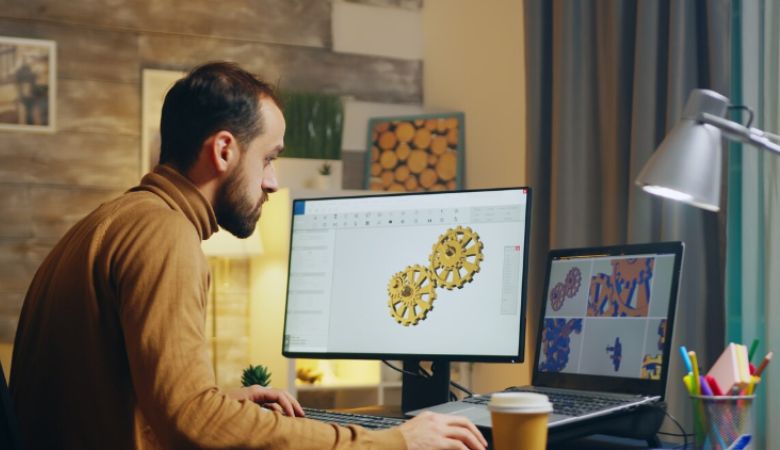Everything You Need to Know About the Principles and Types of Design
If you’re working in marketing, knowing some basic design rules can really help. Maybe you’re doing your own design work, or maybe you want to understand what your design team is doing. Either way, learning the basics can make things easier. It can also help you talk better with your team and explain design problems clearly.
If you’re using tools like Canva, this guide will also give you some simple tips to make your designs better.
What Is Marketing Design?
Marketing design means using visuals to support your brand’s message. It’s not just about making things look nice—it’s about helping your audience understand what you offer. Marketing design can even include interactive experiences, not just pictures or layouts.
One designer explained it like this: design solves problems in smart, useful ways while working toward a clear goal.
Why Is Marketing Design Important?
Good design helps people understand your message. It shows what’s most important and makes your content easy to read and more welcoming. One designer said if we don’t share the message the right way, we’re not doing our job.
Even strong writing can fail if the design is poor. People might miss your call to action, get confused, or just stop paying attention.
Key Principles of Design
Let’s look at some of the most important design rules. These help make your content clear, balanced, and easy to follow.
1. Balance
Balance means arranging all the parts of a design so that it feels even and steady. When things are placed equally on both sides, it’s called symmetrical balance. This makes the design feel calm and neat. If the balance is uneven, it can make a design feel more fun or creative, which is called asymmetrical balance. Either way, good balance helps the design look clean and helps the viewer understand what to focus on.
2. Contrast
Contrast is about showing differences between elements so they stand out. You can use different colors, sizes, shapes, or even empty spaces to create contrast. For example, dark text on a light background is easy to read because of contrast. It also helps guide the viewer’s eyes to important parts. White space, also known as negative space, can also be used to create contrast and give the design a more open and clean look.
3. Dominance or Hierarchy
Dominance, or hierarchy, shows which parts of your design are most important. You can make something stand out by using a larger size, bold colors, or a unique font. This helps people know where to look first. There are usually three levels: dominant (the most important), sub-dominant (secondary), and subordinate (least important). A good design has a clear visual order, so people can follow the message without feeling lost or confused about what matters most.
4. Movement
Movement in design is about how your eyes travel across a layout. A good design leads the viewer’s eyes in the right order, helping tell a story or guide them to the next step. This can be done using lines, shapes, arrows, or repeated patterns. It makes the experience of looking at the design feel smooth. When used well, movement can improve how people interact with your content, especially in things like websites or ads.
5. Proportion or Scale
Proportion, also called scale, is about the size of elements in a design and how they relate to each other. It helps show what’s important and what’s less important. For example, a big title grabs attention, while smaller text supports it. When different sizes are used in a smart way, the design becomes easier to understand. Good proportion also helps make the layout feel balanced and keeps it from looking too crowded or too empty.
6. Unity
Unity means all parts of the design feel like they belong together. It makes the whole design look complete and well-organized. You can create unity by using similar colors, fonts, or shapes. Other ways include keeping elements close together (proximity), aligning items properly, or repeating styles. When a design has unity, it feels natural and easy to follow. Without unity, the design may feel messy or confusing, which can distract from the message.
Types of Marketing Design Made Simple
1. Graphic Design
This type of design includes images for social media, email headers, infographics, and more. Graphic designers make visuals that help brands talk to their audience. Since people love looking at pictures, companies use graphic design to make strong, clear messages.
2. Branding and Logo Design
This is a part of graphic design. It includes the logo, brand colors, fonts, and styles that show what a company stands for. Good branding helps people remember and trust a business. Even if you’re not a designer, tools like brand kit creators can help you get started.
3. UI and UX Design
UI means how things look. UX means how things work. Together, they make websites and apps easy and fun to use. UI focuses on design that matches the brand, while UX checks if users can do what they want without problems. Both are key to a good online experience.
4. Web (Front-End) Design
This design is for the parts of a website that people see and use. Web designers plan what a website looks like and then build it using code like HTML and CSS. They make sure the site looks good and works well, including buttons, menus, and layouts.
5. Multimedia Design
This includes videos, GIFs, and animations. Multimedia design used to be mostly for TV and movies, but now it’s used in marketing too. It helps make content fun and engaging. Designers create things like moving logos, how-to videos, and animated ads.
6. Environmental Design
This type of design is about how places look and feel. It mixes graphic design with space planning, like in stores or offices. Designers create things like murals, signs, and event setups that make spaces more inviting or easier to move through.
Tips for Better Graphic Design:
- Know the purpose Before you design anything, ask what it’s for. Is it a social media post or an ebook? Each needs a different approach. When you know the purpose, your design will match the message.
- Use your brand style Always follow your brand’s color, font, and style rules. This keeps everything looking the same and helps people recognize your brand.
- Use lines and align text Lines and proper alignment help guide people as they read your design. This makes it easier to understand and more organized.
- Add icons and illustrations Besides photos and text, use icons and drawings to make your design stand out. These can explain ideas in a fun and simple way.
Tips for Branding and Logo Design:
- Show your brand’s personality Think of your brand as a person. What are they like? Use this to choose colors, fonts, and images that match your brand’s character.
- Be creative Your logo doesn’t have to show what your business does. It should be unique and simple enough to work in any size.
- Keep it simple Your design should be easy to understand at a glance. Too many details can confuse people.
- Be consistent Use the same design style everywhere — on your website, in emails, and on social media. This helps build trust.
Tips for UI and UX Design:
- Think like a user Always ask, “What would the user want?” Learn how they use your site and what they need. This helps you make better designs.
- Plan for mistakes People make errors. Add simple checks — like alerts if a form is not filled out — to help them fix problems.
- Follow common styles It’s good to be creative, but don’t confuse users. Use familiar layouts like a top menu or contact info at the bottom.
- Make it mobile-friendly Check how your design looks on phones and tablets. Make sure buttons are easy to tap and text is easy to read.
Tips for Web (Front-End) Design:
- The fold is the bottom part of a screen when someone visits your website. You should always put the most important content at the top of the page, where people can see it right away without scrolling.
- Adding space around your text and images makes it easier for visitors to look at and understand your message.
- Colors can make people take action without them even realizing it. For example, a bright-colored button can make someone more likely to click.
- Using pictures is great, but try not to use the same old stock photos that everyone else uses. Choose pictures that look real and match your audience.
Partner with our Digital Marketing Agency
Ask Engage Coders to create a comprehensive and inclusive digital marketing plan that takes your business to new heights.
Conclusion
Learning basic design skills can make a big difference in your work, especially if you’re in marketing. Whether you’re creating designs yourself or working with a team, knowing the basics helps you communicate better and create stronger ideas. And if you’re using tools like Canva, these tips can help you improve your work right away.
At Engage Coders, we believe in crafting excellence through design. With over 5 years of experience, our team knows how to make your ideas come to life. From style guides to asset libraries, we pay attention to every detail. Let our design experts help you stand out with clear, creative, and professional results.







